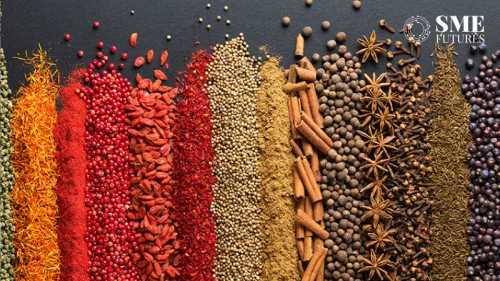Heavy rainfall and floods have taken a toll on one and all in Kerala. Georgaf Benni owns land in Kerala and grows coffee, spices and medicinal plants. According to him, a river nearby one of his farms in the Kallar area has washed away the crop in his 16-acre farm. “Flood has badly affected my business; it has caused a loss of Rs 7 lakh to Rs 8 lakh. All the plants are drained of soil in the flood; transport services have been stalled too. Definitely business will take some time to recover,” he says. Ibrahim, general manager at Tolins Tyre, says his house is flooded and will cost him dearly. Five out of 14 districts in the state – Idduki, Ernakulam, Kollam, Kottayam and Pathanamthitta – are the worst affected areas. Employment of nearly 4.13 million people in these districts has been affected on account of the deluge and the resultant disruptions. While various sectors are still in the process of assessing the economic impact, the state pegs its damage due to the worst flood in a century at over Rs 21,000 crore.
According to ASSOCHAM, tourism and agriculture (rice, spices, coffee, tea and coconut) contribute about 10 per cent each to the state’s Rs 8 lakh crore gross domestic product (GDP) and as the floods have caused a widespread damage to crops, Kerala’s GDP is likely to fall in this financial year. The recent report by Care Ratings also seconds the claim. The report says: “The rain-battered state’s GDP is expected to fall to 6.5 to 7 per cent from the budgeted 7.6 per cent this fiscal year.” According to the report, agriculture contributes 26 per cent of the state GDP, services 66 per cent, out of which tourism and hospitality industries alone contribute 40 per cent of the state’s GDP. In other words, the massive damages in the Ernakulam and Kochi region – which are the highest industrial and tourism contributor to state GDP – mean there could only be a gradual recovery next fiscal.
While it is too early to predict the exact magnitude of the impact, economist Prabhat Patnaik believes that most enterprises, no matter what kind of business they are involved in, will suffer due to floods, because of their inability to run operations. “The flood impact on business differs in various industrial regions. Ernakulam region, which is an industrial belt, is badly affected. Everything now depends on how quickly the market gets back to normal.” According to him, the state’s economy could be affected by up to one per cent depending on the time taken for rehabilitation and reconstruction. He also suggests that agricultural growth can be on the negative side.
Naturally, the debt will settle heavily on Kerala’s shoulders. According to the Care Rating, “The state may have to resort to increased market borrowings from the budget estimate of Rs 1.6 trillion. Flood relief will widen the revenue deficit by 0.12 per cent of gross state domestic product.”
Quite predictably, agriculture is the worst affected sector. Floods have negatively impacted the plantation sector, which is one of the key industries in the area. According to Care Rating calculations, while the rubber industry might see a loss of around Rs 420 crore to Rs 430 crore, tea industry is likely to witness a loss of Rs 35 crore to Rs 40 crore for the period of August to September. The jury is still out on the coffee plantations. Says Chandra Gupt Anand, joint director at the Central Coffee Research Institute: “We are now in the process of assessing the situation and the impact of floods to the plantation. Soon we will release the data.”
With floods washing away fields, prices of coffee and spices have gone high. According to a media report, spices like cardamom, nutmeg and black pepper have seen a hike of around 25 to 50 per cent and prices for small cardamom have risen by Rs 400 per kilogramme because of the restricted supply from Kerala. Saransh Bansal, manager of a Delhi-based spice manufacturing plant, told SME Futures: “As of now, stock is not a concern for us, but we are observing price inflation for certain spices, like cardamom and black pepper. Price hike often depends on the quality of the spices and they have gone high by Rs 200 to Rs 400 per kilogramme.”
The supply-side disturbance in rubber industry will significantly increase the cost for tyres. Babu John of Eastern Treads, which manufactures and markets tyres and retreading materials, predicts that in the upcoming months there will be a huge demand and supply gap, which will impact rubber and tyre industries simultaneously. He says, “About 90 per cent of the natural rubber is produced in Kerala and the floods have destroyed 85 per cent of the rubber plantation. Soon the tyre-manufacturing sector is going to witness an adverse effect due to the widening gap in the demand and the supply. Manufacturing will be disturbed, as there will be a scarcity of raw materials. Right now the rubber is available at Rs 130 per kilogramme. Soon the rates are going to be doubled.” Eastern Treads has its manufacturing unit in Thobupuzha area, which is affected by floods, but the factory escaped the fury of the floods as it is situated on a raised ground. “As of now production is going on, but the procurement of raw rubber is going to be a roadblock,” adds John.
Apollo Tyres claims that production at its two plants located at Perambra and Kalamassery has been disrupted due to flooding. “The production loss due to this natural calamity is more than 1,500 million tonnes. However, consequential loss of profit is not significant.”
Apart from being a major rubber and spice hub, the state is a well-known tourist spot. Kochi and Ernakulum region alone accounts for 52 per cent of all the tourism business. Says Kerala Tourism director P Bala Kiran, “August and September are completely washed out, as we saw huge cancellations due to the massive floods. If things do not pick up in October, we are likely to witness a four to five per cent decline over last year.”
As the floods have left nothing untouched in Kerala, everything now depends on how quickly the situation gets back to normal.











